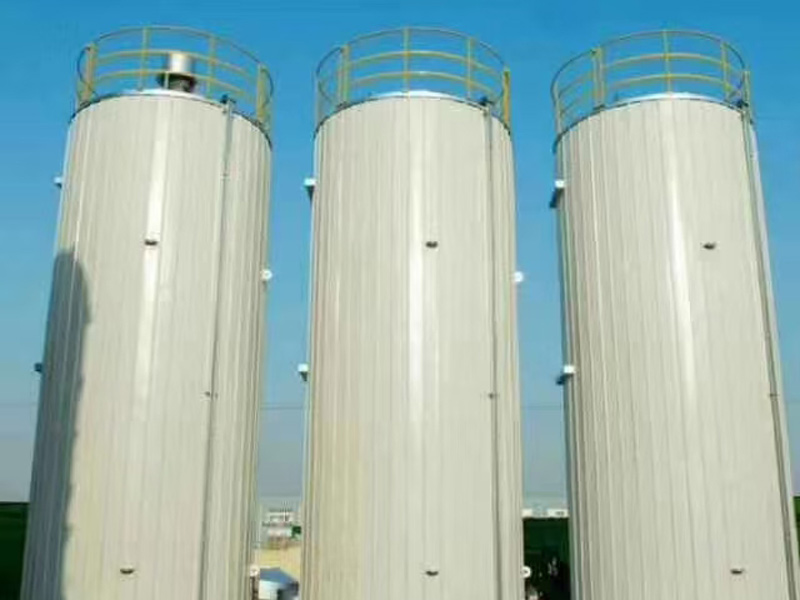If you’ve ever observed a road paving site, you’ll notice that asphalt must remain fluid during use. At room temperature, asphalt is a solid substance; only through heating can it become liquid, making it easier to mix and transport. During this process, the performance of the asphalt heating system directly impacts production efficiency and product quality.
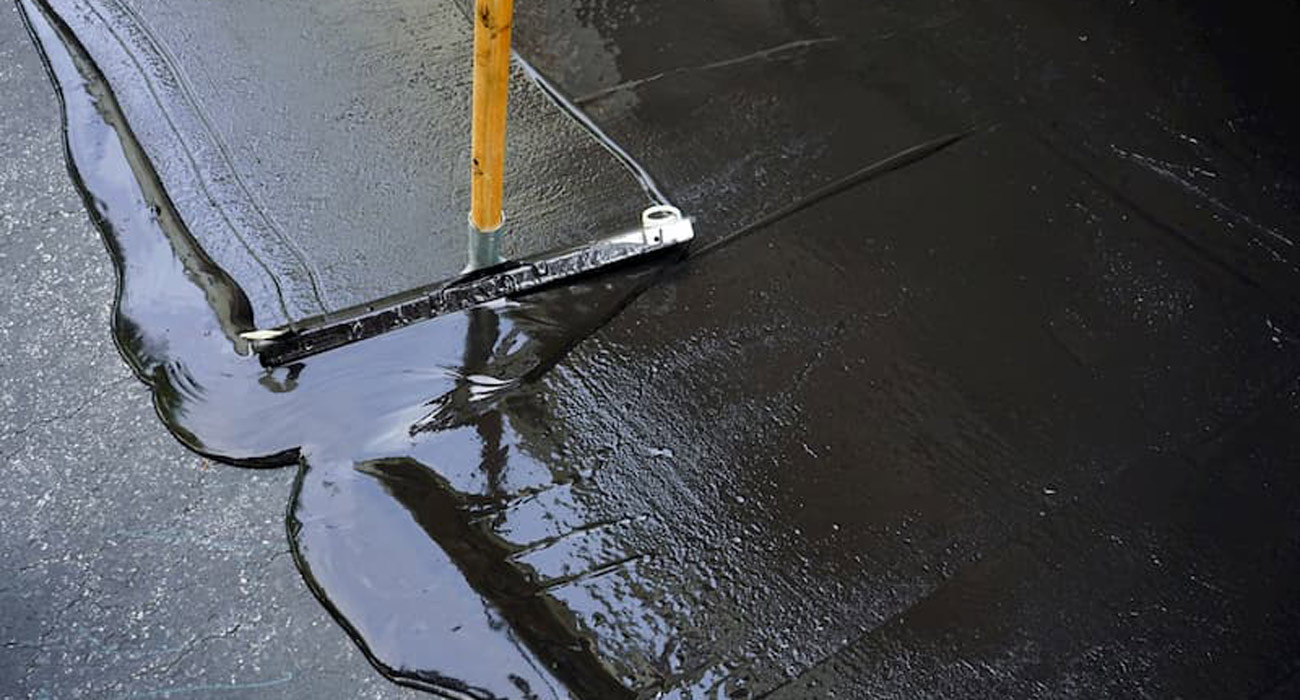
Currently, two common asphalt heating methods in the industry are thermal oil heating and electric heating. They differ in their operating principles, energy costs, and maintenance requirements. This article will provide a comprehensive understanding of the operating mechanisms, advantages and disadvantages, and applicable scenarios of these two heating technologies, helping you find the optimal balance between efficiency, cost, and environmental protection.
Analysis of two heating methods
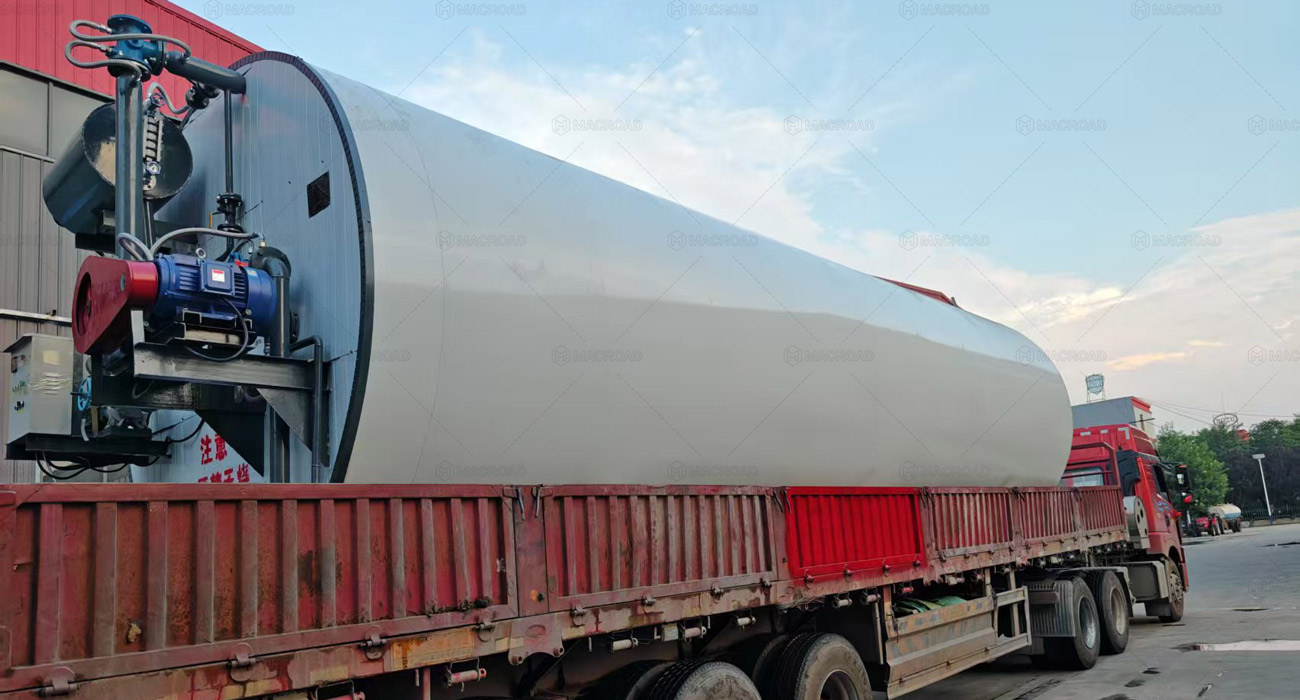
Thermal Oil Heating System: The Power of Circulating Heat
In the heating method of asphalt storage tanks, the thermal oil system is like a silently working heat transporter. It does not directly contact the asphalt, but keeps the entire tank active at a uniform temperature by transferring heat.
Working Principle: Using Hot Oil to Transfer Temperature
The core of the thermal oil system is a thermal oil boiler. It burns fuel (diesel, natural gas, or heavy oil) to heat the thermal oil to 250-300°C. A circulation pump then delivers the hot oil to the asphalt tank jacket. The hot oil circulates in a closed pipeline, evenly transferring heat to the tank, gradually heating the asphalt and maintaining its liquid state.
The entire process is indirect heating—the oil heats the tank wall, which in turn heats the asphalt—making it both stable and safe.
System Advantages: Stable and Energy-Efficient
- Uniform Heating and More Consistent Quality: The thermal oil’s high fluidity effectively prevents localized overheating and asphalt coking, maintaining consistent asphalt viscosity and ductility.
- Efficient and Energy-Saving, Long-Term, Stress-Free Operation: The hot oil circulation system offers high thermal efficiency and low heat loss, making it particularly suitable for stationary asphalt mixing plants operating 24/7.
- Precise Temperature Control and Automated Operation: Temperature sensors and a control system allow operators to monitor temperatures at each point in real time on the control panel, enabling automatic adjustments with minimal manual intervention.
- Highly adaptable, compatible with a variety of storage tanks and piping systems: Whether it’s a vertical or horizontal tank or a finished asphalt pipeline, thermal oil can flexibly provide heat through the pipeline network.
Limitations: High efficiency, but complex system
- High initial investment: A thermal oil system requires a complete heater, oil pump, piping, and control equipment, resulting in higher installation and commissioning costs than electric heating systems.
- High system maintenance requirements: The thermal oil requires regular oil quality testing and pipeline cleaning to prevent coking, which affects heat transfer efficiency. Furthermore, mechanical components such as circulation pumps and valves require regular maintenance.
- More stringent safety management: Because thermal oil is a flammable medium, the system must remain sealed and leak-proof during operation, and equipped with dual pressure and temperature safety measures.
Application Scenario: Designed for High-Capacity and Long-Term Operations
A thermal oil heating system is more like an energy center designed for heavy loads and long production cycles. It is commonly used in:
- Large-scale stationary asphalt mixing plants (such as the ALQ series asphalt batching plant) to ensure continuous heating and stable production;
- High-temperature applications, such as heating and insulation of modified or specialty asphalt;
- Centralized heating systems, capable of providing heat to multiple storage tanks or pipelines simultaneously.
In these applications, its stability and reliability make it a standard feature of most large-scale asphalt mixing plants.
Compared to direct heating methods, the greatest advantage of thermal oil systems is their stability. Like a thermal energy vessel running through the entire system, it maintains a consistent tank temperature, avoiding fluctuations and waste.
Although initial investment is high and maintenance requirements are stringent, its energy savings and stability often result in lower overall costs over long-term continuous asphalt production.
Electric Heating System: Directly Delivering Heat to Asphalt
If thermal oil heating is like a steady heat relay, then electric heating systems offer a direct energy exchange. Eliminating the need for oil lines and pipelines, electric heating systems convert electrical energy directly into heat, transferring it to the tank or the asphalt itself. This simple, efficient, and clean system is an increasingly popular lightweight heat source in modern concrete mixing plants.
Working Principle: Electric current generates heat
The core component of an electric heating system is the electric heating tube, typically installed inside the tank or along the tank wall. When current flows through the tube, the resistance wire heats up and transfers heat directly to the surrounding asphalt or metal tank wall. A temperature control sensor monitors the temperature in real time, automatically adjusting the power to maintain the tank temperature within the set range.
The entire process is simple and straightforward, requiring no fuel combustion or complex circulation systems. The instant heating feature of the electric heating system makes it particularly suitable for applications with flexible temperature requirements and frequent startups.
System Advantages: Simple, Clean, and Plug-and-Play
- Simple Structure and Flexible Installation: No boiler, combustion chamber, or piping system is required; modular installation is ready for use, shortening commissioning cycles.
- Clean and Emission-Free Operation: Electrical energy is directly converted into heat, eliminating smoke and exhaust emissions. This meets modern environmental standards and is particularly suitable for urban construction sites or countries with strict environmental protection requirements.
- Precise Control and Rapid Response: The intelligent control box allows real-time power adjustment, enabling zoned heating, automatic constant temperature, and remote monitoring.
- Low maintenance cost, virtually maintenance-free: The system lacks an oil circulation pump or combustion components, so maintenance primarily focuses on periodic inspection and replacement of heating elements.
Limitations: High energy consumption, unsuitable for large projects
- Operating costs are significantly affected by electricity prices: Although electric heating systems have a simple structure, electricity costs are high, making long-term operation uneconomical in regions with high electricity prices.
- Limited heating speed and range: Electric heating relies primarily on point or surface heat transfer, resulting in slow heating and uneven heat distribution for large-capacity storage tanks.
- Unsuitable for continuous, long-term operation: Prolonged high-load operation can cause overheating and aging of the heating elements, requiring regular replacement to maintain efficiency.
Application scenarios: Small, flexible, and instant heat source
The characteristics of electric heating systems make them ideal for:
- Mobile or temporary asphalt mixing plants (such as the ALYQ series mobile asphalt plant), offering easy installation and fast startup;
- Small storage tanks or reheating systems, such as modified asphalt addition tanks, sampling tanks, and asphalt pipeline heating;
- Suitable for use in conjunction with photovoltaic or energy storage systems in regions with stable electricity prices or high utilization of renewable energy.
In these scenarios, electric heating systems are known for their lightweight and low maintenance, making them ideal for flexible operations and temporary projects.
Electric heating systems are an ideal choice for small and medium-sized projects, environmental protection construction or temporary sites; in factories that require high production capacity and long-term stable heating, they are more suitable as auxiliary or local heating solutions, complementing thermal oil systems.
Before Choosing Oil or Electric, Check These 5 Key Factors
Choosing an asphalt heating method isn’t a question of which is more advanced, but rather one that’s more suitable. Project scale, operating cycle, energy availability, and management capabilities all influence the final decision.


Both thermal oil and electric heating have distinct advantages and limitations. The following five perspectives can help you more rationally evaluate your options in asphalt plants.
Project Scale and Production Cycle
- Large asphalt mixing plants or continuous production lines: Thermal oil heating systems offer strong circulation stability, maintaining uniform heat supply during long periods of high-load operation, making them suitable for high-capacity and continuous production environments.
- Small- to medium-sized or temporary projects: Electric heating systems offer a simple structure, quick startup, and require no boilers or piping systems. They are more suitable for projects with short construction periods and high mobility mobile hot mix asphalt plant.
Choice Criteria: The longer the project’s operating cycle and the larger the production volume, the more inclined you are to use an oil heating system. The more flexible the project and the shorter its cycle, the more suitable it is for an electric heating system.
Energy Requirements and Operating Costs
- Thermal oil systems: While the initial investment is higher (boiler and circulation system), they offer high operating efficiency, relatively stable fuel costs, and better long-term economics.
- Electric heating systems: The initial investment is lower, and the equipment is easy to install. However, overall operating costs are significantly affected by electricity prices. High local electricity prices or energy shortages may increase operating expenses.
Choice Criteria: Electric heating can be advantageous in areas with stable power supply and abundant renewable energy. Conversely, in areas with readily available fuel and low oil prices, thermal oil systems are more cost-competitive.
Temperature Control Performance and Maintenance Management
- Thermal oil systems: Offer high heat capacity and minimal temperature fluctuation, making them suitable for continuous production. However, the system is complex and requires regular maintenance of the thermal oil quality and circulation equipment.
- Electric heating systems: Offer fast temperature control response, high adjustment accuracy, and minimal maintenance, but heating elements require regular inspection to prevent degradation or damage.
In environments requiring high temperature stability, oil heating provides more consistent results. In operations requiring flexible temperature control or frequent starts and stops, electric heating offers more direct control.
Environmental and Safety Requirements
- Thermal oil systems: Involving combustion and oil circulation, they require strict leak and fire safety designs. Combustion emissions must comply with local environmental standards.
- Electric heating systems: Offer no open flames, no smoke emissions, low noise levels, and are environmentally friendly. However, electrical safety and insulation protection during high current operation are important.
The safety priorities of the two systems differ: oil heating focuses on fire prevention and oil quality, while electric heating focuses on the electrical system and insulation performance.
Comprehensive Solution: Synergistic Use of Oil and Electricity
In actual projects, more and more companies are choosing hybrid heating systems.
- Thermal oil heating provides primary heating and constant temperature control, maintaining production continuity.
- Electric heating serves as a local or auxiliary heat source for nighttime heat preservation, temporary heating, or emergency heating.
This combination optimizes energy allocation under varying operating conditions, balancing stability, economy, and flexibility, and represents the future development trend of asphalt heating systems.
There’s no absolute superiority or inferiority between thermal oil and electric heating systems. The former offers stability and efficiency, suitable for large-scale production; the latter offers simplicity and flexibility, suitable for decentralized operations and energy-saving transformation. Hybrid solutions offer a balance between the advantages of both.
The optimal solution lies in fully understanding your project requirements and selecting the heating method that best suits site conditions, energy mix, and management capabilities. Contact Macroad‘s engineering team today to tailor your optimal asphalt heating method.
Stable Heat, Lasting Use: The Right Way to Operate Two Asphalt Heating Systems
Regardless of the heating system ultimately used, asphalt heating is a high-temperature operation. Ignoring operational management can lead to reduced heating efficiency and even equipment hazards. Thermal oil heating and electric heating each have their own operational requirements. Adhering to the following specifications will help maintain system safety, efficiency, and longevity.
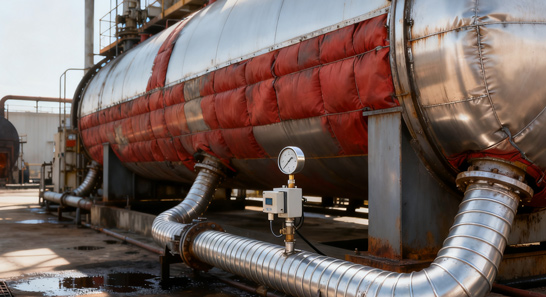 |
 |
 |
| Thermal oil heating system | Classification | Electric heating system |
|
Safety protection |
|
|
Maintenance and Inspection |
|
|
Operating specifications |
|
Regardless of the system used, operators must receive professional training and be familiar with heating principles and emergency response procedures. Regular maintenance is a prerequisite for system stability; safety monitoring is key to preventing accidents; and recording and tracking are important means to improve efficiency and extend service life.
The ultimate goal is not to make the asphalt hotter, but to make the heat safer, more controllable, and more efficient for production.
From Heat to Intelligence: The Next Generation of Asphalt Heating Systems
While ensuring safe and efficient operation, the industry hasn’t stopped at stable heating. With the continuous advancement of energy-saving policies, environmental protection requirements, and intelligent technologies, asphalt heating systems are shifting from simply heating to intelligent heating system. Whether using thermal oil or electric heating, future development trends point toward smarter, greener, and more economical approaches.
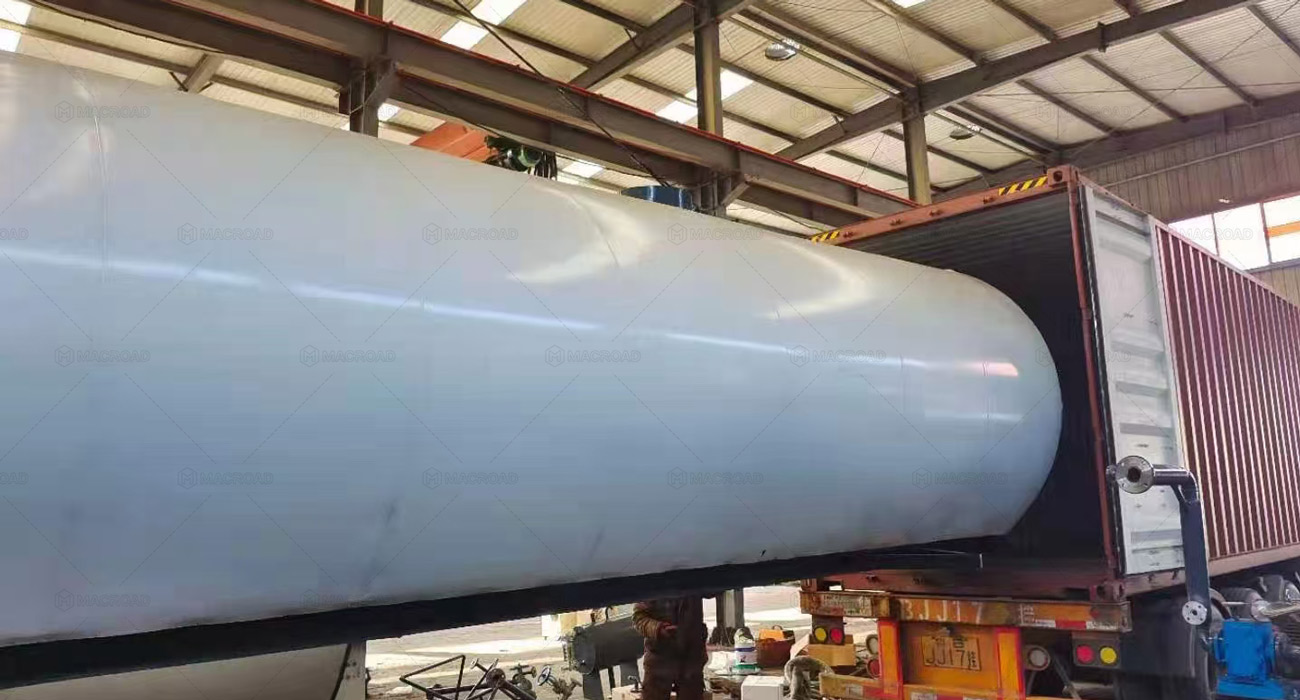
Intelligent Temperature Control and Data-Driven Operation and Maintenance
Traditional manual temperature control is being replaced by intelligent temperature control systems.
Future heating systems will utilize temperature sensors, PLC control, and cloud-based monitoring to achieve:
- Automatically adjust heating power and precisely control temperature fluctuations;
- Real-time monitoring of system operating status and early warning;
- Data logging and trend analysis to facilitate proactive maintenance and reduce downtime.
This means that heating temperature is no longer a matter of operational experience, but a set of controllable data.
Energy Conservation and Emission Reduction and Energy Structure Optimization
Energy efficiency in asphalt heating systems is becoming the next competitive focus.
- Thermal oil systems: Evolving towards high-efficiency burners, waste heat recovery, and oil life extension;
- Electric heating systems: In some regions, photovoltaic and energy storage systems will be integrated to form a “green closed loop” to achieve zero-emission operation;
- Hybrid energy models: Some companies are beginning to adopt a combination of electricity + oil or electricity + gas, automatically switching according to load to achieve a balance between cost efficiency and stability.
The future goal is not to determine which method is superior, but rather to make thermal energy more environmentally friendly, intelligent, and economical.
Modularity and Flexible Configuration
With the diversification of construction cycles and site types, modular design will become a trend. Manufacturers can quickly configure heating modules based on project requirements, such as:
- Removable electric heating components
- Multi-tank parallel hot oil circulation system
- Intelligent heating group control platform with IoT remote scheduling
This flexibility makes the equipment more adaptable to projects of varying sizes and reduces overall project retrofit costs.
The relationship between thermal oil and electric heating is not one-sided. In future asphalt heating systems, they will increasingly coexist and complement each other: large tanks will use oil heating as the primary heat source; small tanks or independent modules will use electric heating for precise temperature control and insulation.
This dual-system integration not only improves energy efficiency but also makes equipment management more flexible, safe, and environmentally friendly.
FAQs
Can electric heating systems operate reliably in low temperatures or cold regions?
Is thermal oil system maintenance expensive?
Does the heating system affect asphalt quality?
It does. Asphalt is a heat-sensitive material. Overheating or uneven heating can cause aging, coking, or viscosity changes.To ensure quality, the thermal oil system should maintain an oil temperature of ≤ 300°C. Electric heating should avoid hot spots and regularly clean carbon deposits from the heating elements. It is recommended to use automatic temperature control and a uniform temperature design to ensure internal tank temperature differences are less than ±5°C. Proper heating methods can significantly extend the storage life of asphalt and maintain its workability.
Does the asphalt tank heating system require special care during shutdown or extended periods of inactivity?
Yes, especially during seasonal construction or project breaks.
- Thermal oil system: Circulate and cool the oil before shutdown to prevent carbonization; run the circulating pump regularly to prevent seizures.
- Electric heating system: Completely disconnect the power cord and inspect the cable insulation and port oxidation. If the system is stored for extended periods, it is recommended to install a moisture-proof cover.
In addition, the asphalt in the tank can be maintained at approximately 130°C for several hours before draining to prevent solidification and blockage.
Is there a significant difference in investment costs between these two heating systems? Which is more cost-effective in the long run?
There are indeed differences in initial investment:
- Thermal oil system: The equipment is complex, including a thermal oil boiler, a circulation pump, piping, etc., resulting in a higher initial investment, but lower operating energy consumption and suitable for long-term continuous production.
- Electric heating system: The structure is simple, installation is easy, and the initial investment is low, but operating costs will increase with high electricity prices or long-term use.
From a lifecycle perspective:
- For large-scale asphalt mixing plants or factories with high annual production, thermal oil systems are more economical.
- For short- to medium-term projects or temporary construction sites, the flexibility and convenience of electric heating offer a better return on investment.
Thermal oil heating and electric heating represent two mature and evolving heating solutions. The former is robust and durable, suitable for large-scale continuous production; the latter is flexible and convenient, better suited to changing construction environments.

However, the true determinant of heating effectiveness lies not in which method is more advanced, but in whether each method can achieve its optimal performance in the right scenario. In the future, with the widespread adoption of intelligent temperature control, energy optimization, and hybrid heating technologies, the boundaries between oil and electricity will gradually blur. They will work together to achieve a more efficient, environmentally friendly, and intelligent heating experience at different stages and for different needs.


